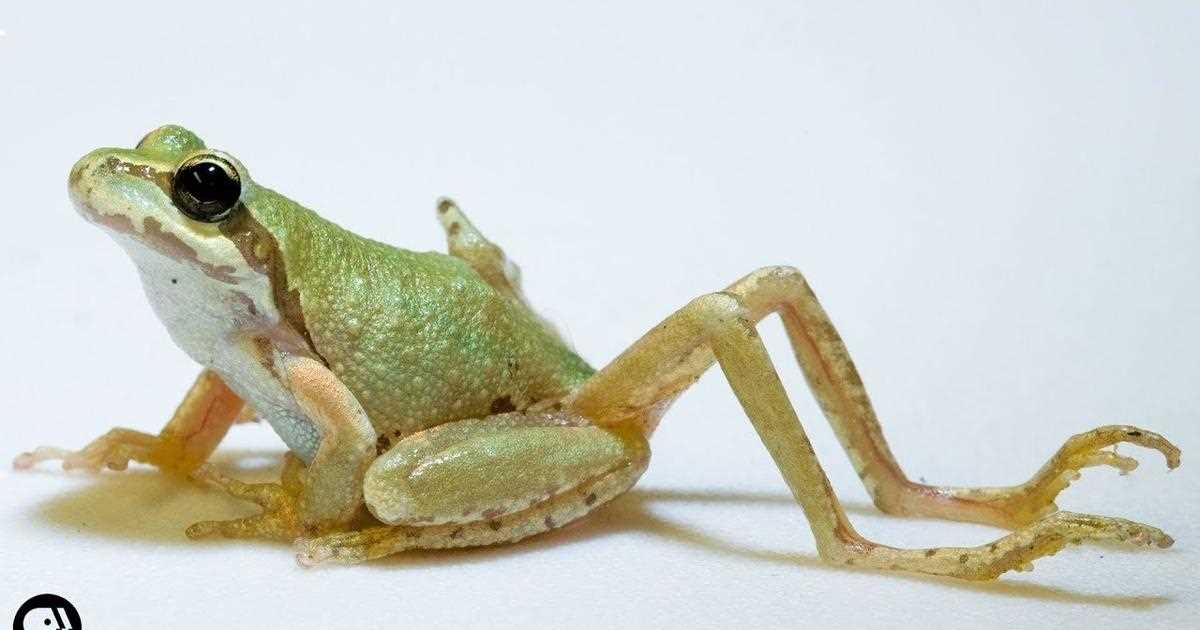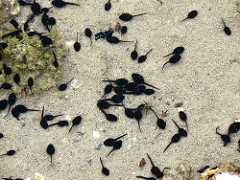
Another factor that influences frogs’ dual lives is their reproductive cycle. Frogs rely on water for breeding, as it provides a suitable environment for their eggs to develop. By spending the early stages of their lives in water, frog larvae have access to ample food sources and protection from predators. Once they reach maturity, frogs venture onto land to search for mates and establish territories. This distribution of their reproductive activities across two different habitats serves to increase the likelihood of successful breeding and further perpetuates the dual life cycle of frogs.
Discovering the Secret of Frog Metamorphosis
Why do frogs undergo metamorphosis?
One might wonder why frogs undergo such a dramatic transformation during their lifecycle. The answer lies in their unique biology and ecological niche. Frogs are amphibians, which means they are cold-blooded vertebrates that inhabit both aquatic and terrestrial environments. This dual lifestyle requires them to be adaptable and able to exploit the resources available in both habitats.
What happens during frog metamorphosis?

The process of frog metamorphosis is intricate and involves several stages. It begins with the growth of hind limbs, followed by the absorption and reconfiguration of the tail. This is accompanied by the development of lungs for breathing air and the reshaping of the mouth and digestive system to accommodate a terrestrial diet.
Additionally, frogs undergo physiological changes during metamorphosis. The production of certain hormones, such as thyroxine, plays a crucial role in orchestrating these transformations. These hormones regulate the timing and sequence of events, ensuring that the different body parts develop in the correct order and at the right time.
The metamorphosis of frogs is not only a fascinating phenomenon from a biological perspective but also holds significant ecological importance. The ability to undergo metamorphosis allows frogs to exploit a wide range of habitats and ecological niches, increasing their chances of survival and reproduction.
The two lives of frogs: aquatic and terrestrial
Frogs are unique creatures that lead two distinct lives. Their metamorphosis from aquatic larvae to terrestrial adults is a testament to their adaptability and resilience. It is a reminder of the incredible diversity and complexity of life on our planet.
| Key Points |
|---|
| – Frogs undergo metamorphosis to transition from aquatic larvae to terrestrial adults. |
| – The transformation is driven by the need to adapt to different environments and resources. |
| – During metamorphosis, frogs develop limbs, lungs, and a terrestrial digestive system. |
| – The process is regulated by hormones and holds ecological and developmental significance. |
Exploring the Intricate Transformation Process in Frogs
One of the most fascinating aspects of frogs is their ability to undergo a complete metamorphosis during their development. Unlike many other animals, which undergo gradual changes over time, frogs have two distinct lives: their aquatic life as tadpoles and their terrestrial life as adult frogs.
The transformation process of frogs is a complex and intricate one. It begins with the hatching of eggs in water, where tiny tadpoles emerge. These tadpoles have gills and a tail, allowing them to live in the water and breathe underwater. They feed on algae and tiny organisms that they filter from the water.
Eventually, the tadpole’s tail disappears, and it develops lungs, allowing it to leave the water and take its first breaths of air. At this point, the frog has completed its metamorphosis and enters its terrestrial life stage. It hops out of the water and explores the surrounding area, searching for food and finding a suitable habitat.
Why do frogs undergo such a transformation? The different life stages of frogs allow them to adapt to different environments and take advantage of various food sources. Tadpoles are able to live and feed in the water, while adult frogs can move on land and capture insects and other small prey.
The Two Lives of Frogs: Aquatic and Terrestrial

Once the metamorphosis is complete, the fully transformed frog leaves the water and enters the terrestrial environment. It begins its new life as an adult frog, equipped with strong hind legs for hopping and lungs for breathing air. This marked transition is essential for frogs to survive and thrive in their two distinct habitats.
But why do frogs lead such dual lives? It is believed that this evolutionary adaptation allows frogs to occupy a broader range of habitats and resources. The aquatic environment provides safety during their vulnerable larval stage, enabling them to grow and develop in relative protection. On the other hand, the terrestrial environment offers opportunities for exploration, camouflage, and finding food.
The Adaptable Nature of Frogs: Unveiling Their Dual Lives
Frogs, as it turns out, are extraordinary creatures that have two distinct lives. Scientists have long been fascinated by the incredible phenomenon of frog metamorphosis, which involves a complete transformation from aquatic larvae to terrestrial adults.
The transition from water to land is not an easy feat for frogs, but they have evolved remarkable mechanisms to survive in both environments. This adaptability is truly remarkable and sets them apart from many other creatures in the animal kingdom.
Frogs are also highly efficient at conserving water, which is essential for their survival. Their skin is specially designed to retain moisture and prevent dehydration, even in dry environments. In addition, they have developed specialized behaviors, such as burrowing underground or hiding in moist areas, to minimize water loss during periods of drought.
The Importance of Water in the Lives of Frogs
Frogs are fascinating creatures that have two distinct lives, aquatic and terrestrial. This phenomenon of dual lives is a unique characteristic of frogs, setting them apart from many other animals. But why do they have two lives? The answer lies in the intricacies of their life cycle and the importance of water in their development and survival.
Exploring the Fascinating Phenomenon
Frogs start their lives as eggs laid in water. These eggs hatch into tadpoles, which are fully aquatic and breathe through gills. As tadpoles, they undergo a remarkable transformation called metamorphosis, where they gradually develop limbs and lungs. This transformation allows them to transition from water to land, marking the beginning of their terrestrial life.
Discovering the Secret of Frog Metamorphosis
Exploring the Intricate Transformation Process in Frogs
During metamorphosis, the tadpole’s diet also changes. Tadpoles primarily feed on algae and other small aquatic organisms, while adult frogs are carnivorous, feeding on insects and small invertebrates. This dietary shift is another adaptation that allows frogs to thrive in both aquatic and terrestrial environments.
The Role of Water in Frog Development and Survival
Water plays a vital role in every stage of a frog’s life. It provides a habitat for eggs and tadpoles, ensuring their survival during their early stages of development. It also serves as a breeding ground and a source of food for adult frogs. Additionally, water helps regulate body temperature and maintains the moisture necessary for the respiration and skin health of amphibians.
Frogs’ ability to live in both water and on land showcases their remarkable adaptability. They have evolved over millions of years to exploit different habitats and environments, making them one of the most successful and diverse groups of amphibians on Earth.
Tracing the Development of Frogs from Larvae to Adult
Examining the Role of Water in Frog Development and Survival
Additionally, water helps frogs maintain their body temperature and stay hydrated. Frogs are ectothermic animals, meaning they cannot regulate their body temperature internally. They rely on their surrounding environment to provide the necessary warmth. Water bodies, such as ponds or wetlands, help regulate the temperature of frogs, providing them with a suitable habitat. Furthermore, frogs have permeable skin, which allows them to absorb water through their skin. This is essential for preventing dehydration, especially during dry periods or when they are not in close proximity to water sources.
The Two Lives of Frogs: Aquatic and Terrestrial
Being amphibians, frogs have the unique ability to inhabit both aquatic and terrestrial habitats. This adaptability is key to their survival, as it allows them to thrive in a variety of environments. Some frogs may choose to spend more time in water, while others prefer to live primarily on land, seeking water sources for breeding and other essential activities.
Tracing the Development of Frogs from Larvae to Adult
As we have said before, frogs have two lives. Starting as tiny eggs laid in the water, they hatch into tadpoles or larvae. This is the beginning of their aquatic life. Tadpoles have gills and long tails that enable them to swim and breathe underwater. They feed on algae and other plant matter, growing and developing over time.
During metamorphosis, the tadpole gradually undergoes a series of changes. Its tail starts to shrink and eventually disappears, while its limbs develop and grow. Its lungs begin to develop as well, preparing it for a life on land. The tadpole also undergoes internal changes, with its digestive system transforming to accommodate a diet of insects and small invertebrates.
Tracing the development of frogs from larvae to adult is a fascinating journey that highlights the adaptability and resilience of these amazing creatures. From their early days as tiny eggs to their final transformation into jumping amphibians, frogs undergo an incredible transformation that allows them to thrive in both aquatic and terrestrial environments.

I’m Lena Adams—a product of an unconventional upbringing in the African wilderness. My father, a daring explorer of African wildlife, sparked my fascination with reptiles, a passion that intertwined with the tragic loss of my mother during an expedition, leaving an indelible mark on my life. Driven to understand the creatures that captivated my parents, I embarked on my journey, sharing insights about reptiles, frogs, and lizards on my website. Through my explorations and conservation efforts, I honour my family’s legacy while seeking connections—to the creatures, nature, and the mother whose presence I yearn to understand.
